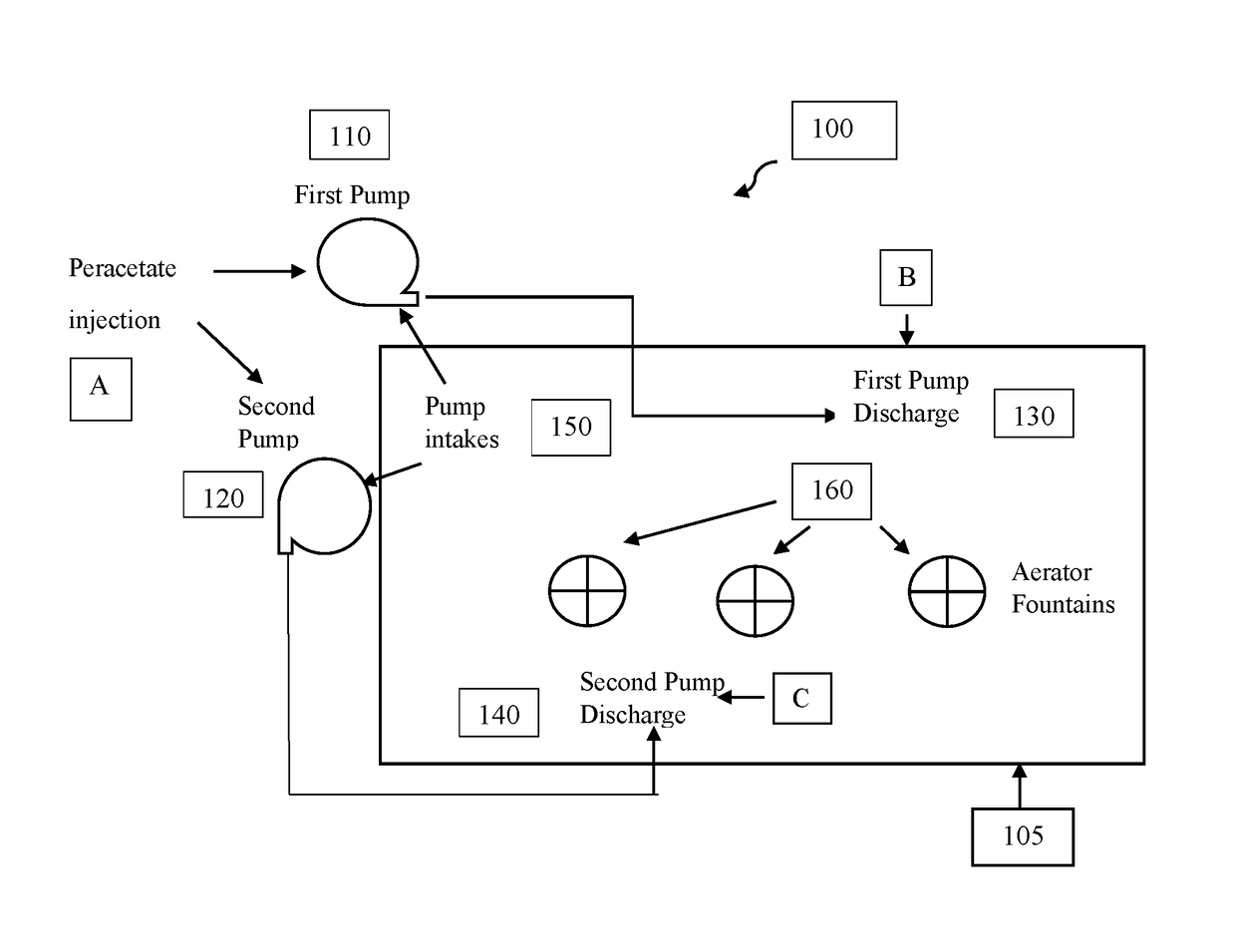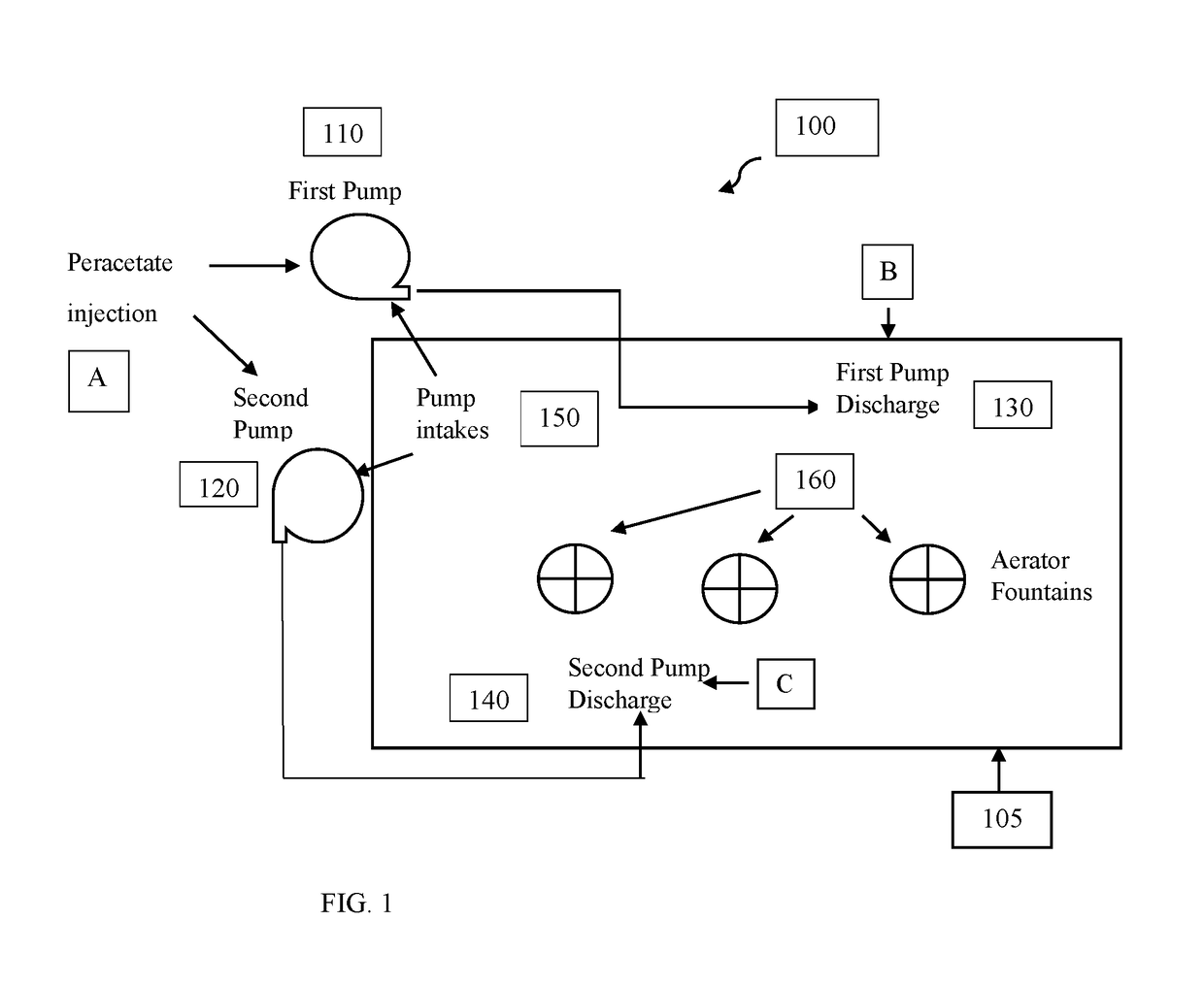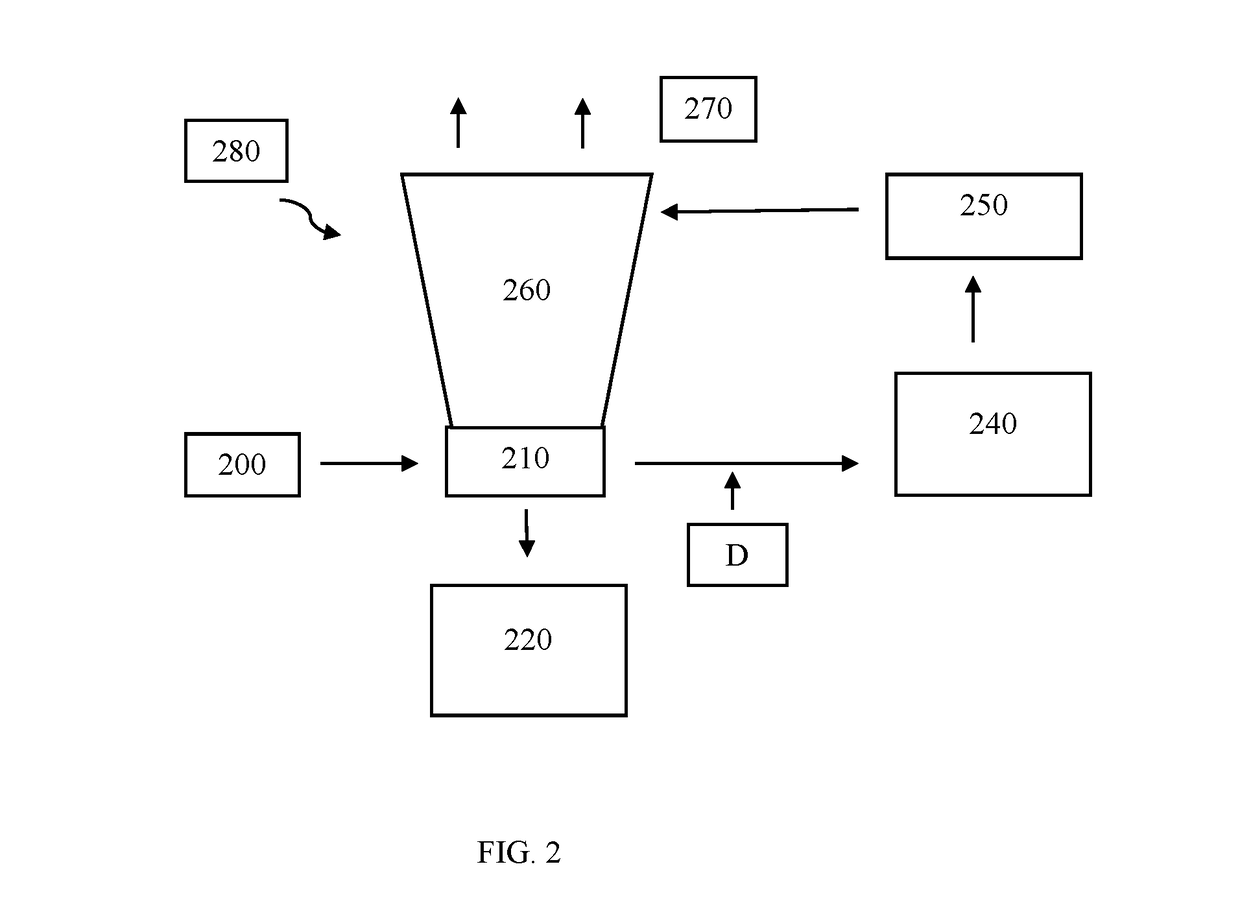Methods of microbial control
a technology of oxidant solution and microbial load, applied in the direction of multi-stage water/sewage treatment, water/sewage treatment by oxidation, nature of treatment water, etc., can solve the problems of microbial load, health risks, algal toxins that pose potential health hazards, etc., to reduce biofilm and microbial corrosion, reduce the effect of microbial load and enhanced separation
- Summary
- Abstract
- Description
- Claims
- Application Information
AI Technical Summary
Benefits of technology
Problems solved by technology
Method used
Image
Examples
embodiments
[0047]In some embodiments, oxidation chemistry may be used for microbial control of contaminated water, reducing biological growth, disinfecting and sanitizing. The oxidation chemistry used may have minimal impacts on pH and scaling potential of fluids. A relatively short-lived active oxidant may be a benefit for avoiding negative impacts on pulp quality, paper quality, fermentation feedstock quality, food product quality and for minimizing oxidant corrosivity and environmental impacts. Selectivity of the oxidation chemistry towards different materials is also desirable for efficiency of oxidant use, compatibility with a variety of materials and avoidance of unnecessary or undesirable side reactions. Oxidant solutions that generate a variety of reactive oxygen species (ROS) in their treatment environments may be good candidates for achieving some or all of these attributes.
[0048]ROS may be generated in-situ by several chemical methods including the Fenton catalytic cycle with hydrog...
example 1
tment Method with Peracetate Oxidant Solution and Bleach
[0134]A 2 acre, lined evaporation pond containing about 4.1 million gallons of water (waste water from the oilfield and industrial sources) was having severe odor problems during the warm summer months due to anaerobic bacteria blooms and chemical decomposition byproduct odors. The pond was being treated with about 2100 to 4200 gallons of 12.5% chlorine bleach every three to four days to manage the odors. The water in the pond was about pH 7 and contained approximately 5% salinity, 10-14 mg / L total iron and about 400-600 mg / L suspended solids. In the summer months the water temperature ranged from about 65 to 85 degrees Fahrenheit. The pond had three modest-sized aerator fountains that were operated up to 12 hours per day.
[0135]Treatment of the pond with peracetate oxidant solution was conducted 4-5 days after a bleach treatment. The pond water appeared grey-brown with some black plumes surfacing from the bottom of the water co...
example 2
ower Example
[0142]An evaporative cooling tower at a municipal power plant was on a chlorine treatment program for microbiological control. The cooling tower had a water circulation rate of 60,000 gpm and a total water volume of about 906,000 gal and averaged about 3 cycles of concentration. The makeup water source was primarily river water containing some alkalinity, which resulted in a slightly alkaline pH about 7.8-8.2 in the cooling tower. The total oxidant concentration in the cooling water was maintained around 0.2 to 0.5 ppm Cl2 to minimize corrosion rate and chemical costs. At this chlorine concentration and pH the ORP of the cooling water was around 500-575 mV (vs SHE), a range correlated with biostatic conditions. However, over time the microbial load in the water and on surfaces of the condenser had increased leading to lower cooling efficiency and increased microbial corrosion. Increasing exposure risk to microbes in the drift, such as legionella, was also a concern.
[0143...
PUM
| Property | Measurement | Unit |
|---|---|---|
| temperature | aaaaa | aaaaa |
| pH | aaaaa | aaaaa |
| molar ratio | aaaaa | aaaaa |
Abstract
Description
Claims
Application Information
 Login to View More
Login to View More - R&D
- Intellectual Property
- Life Sciences
- Materials
- Tech Scout
- Unparalleled Data Quality
- Higher Quality Content
- 60% Fewer Hallucinations
Browse by: Latest US Patents, China's latest patents, Technical Efficacy Thesaurus, Application Domain, Technology Topic, Popular Technical Reports.
© 2025 PatSnap. All rights reserved.Legal|Privacy policy|Modern Slavery Act Transparency Statement|Sitemap|About US| Contact US: help@patsnap.com



